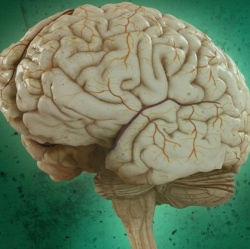
Embryonic neural stem cells transplanted into damaged areas of the visual cortex of adult mice were able to differentiate into pyramidal cells, forming normal synaptic connections, responding to visual stimuli, and integrating into neural networks, researchers have demonstrated.
The adult human brain has very little ability to compensate for nerve-cell loss, so biomedical researchers and clinicians are exploring the possibility of using transplanted nerve cells to replace neurons that have been irreparably damaged as a result of trauma or disease, leading to a lifelong neurological deficit.
Previous studies have suggested there is potential to remedy at least some of the clinical symptoms resulting from acquired brain disease through the transplantation of fetal nerve cells into damaged neuronal networks. However, it has not been clear whether transplanted intact neurons could be sufficiently integrated to result in restored function of the damaged network.
Now, in study published in Nature, the researchers have found that transplanted embryonic nerve cells properly differentiated into pyramidal cells, forming normal synaptic connections, responding to visual stimuli, and carrying out the tasks performed by the damaged cells.
The researchers were also “astounded” to find that the replacement neurons grew axons throughout the adult brain, reaching proper target areas, and receiving V1-specific (from the primary visual cortex) inputs from host neurons, precisely the same inputs that the original neurons had received.
This includes neocortical circuits that normally never incorporate new neurons in the adult brain. In addition, after 2–3 months, the transplanted neurons were fully integrated in the brain, showing functional properties indistinguishable from the original neurons.
